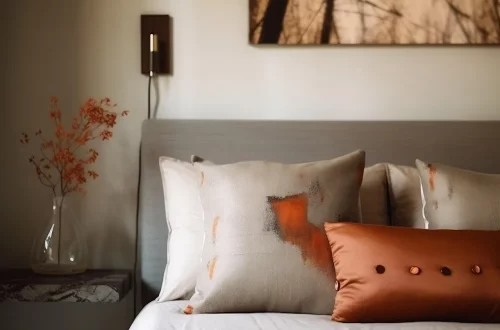
Exploring the Beauty and History of Russian Rugs
Exploring the Beauty and History of Russian Rugs
The intricate world of Russian rugs is a testament to the country’s rich cultural heritage and artistic expression. These textiles, woven from natural fibers such as wool and cotton, reflect a unique blend of traditional craftsmanship and historical significance. Each rug tells a story, not only through its design and colors but also through the techniques employed in its creation. The artistry involved in rug-making has been passed down through generations, with each region in Russia showcasing its own distinctive style and patterns.
The beauty of Russian rugs extends beyond their visual appeal. They serve as cultural artifacts that capture the essence of Russian history, embodying the traditions and lifestyles of the people who created them. From the nomadic tribes of Siberia to the urban centers of Moscow and St. Petersburg, every rug carries the fingerprints of its maker, offering a glimpse into the social and economic factors that influenced its design. The demand for these exquisite pieces has grown over time, leading to a resurgence of interest in both antique and contemporary Russian rugs among collectors and interior designers alike. As we delve deeper into the world of Russian rugs, we begin to appreciate not only their aesthetic value but also their historical and cultural significance.
The Artistry Behind Russian Carpet Weaving
The process of creating a Russian rug is a meticulous art form that requires skill, patience, and a deep understanding of traditional techniques. Weaving has been a part of Russian culture for centuries, with each region developing its own distinctive methods. The most common technique used in Russian rug-making is known as the “Ghiordes knot,” which creates a durable and tightly woven fabric. Artisans spend years honing their craft, learning how to manipulate the loom and select the best materials to create stunning pieces.
One of the most notable characteristics of Russian rugs is their vibrant colors and intricate patterns. Dyes are often derived from natural sources, such as plants and minerals, which not only produce rich hues but also lend a sense of authenticity to each piece. Common motifs found in Russian rugs include geometric shapes, floral designs, and scenes from nature, all of which are deeply rooted in the local culture and traditions. The choice of colors and patterns can vary significantly from one region to another, making each rug a unique representation of its origin.
In addition to the technical aspects of weaving, the cultural context plays a significant role in the artistry of Russian rugs. Many designs are inspired by folklore, mythology, and the natural environment, reflecting the values and beliefs of the communities that created them. For example, the use of animal motifs often symbolizes strength and protection, while floral patterns may represent fertility and abundance. This connection between art and culture adds a layer of meaning to each rug, making them not only decorative items but also powerful storytellers.
The revival of interest in traditional craftsmanship has led to a resurgence in the production of Russian rugs. Contemporary artisans are combining age-old techniques with modern designs, resulting in a new wave of creativity that appeals to a broader audience. This fusion of tradition and innovation ensures that the art of rug-making continues to thrive, preserving the cultural heritage of Russia for future generations to enjoy.
Regional Variations and Styles of Russian Rugs
Russian rugs are not a monolithic category; rather, they encompass a wide range of styles and designs that reflect the diverse cultural influences found throughout the country. Each region has its unique characteristics, influenced by local traditions, resources, and historical events. Understanding these regional variations can provide insight into the rich tapestry of Russian rug-making.
One of the most renowned styles is the “Kazak” rug, originating from the Caucasus region. These rugs are celebrated for their bold colors and geometric patterns, often featuring stylized motifs that evoke the natural landscape. Kazak rugs are typically made from high-quality wool, resulting in a dense and durable fabric that can withstand the test of time. The vibrant colors used in Kazak rugs are achieved through natural dyes, giving them a distinctive and lively appearance.
In contrast, the “Tula” rugs from Central Russia are known for their intricate floral designs and soft color palettes. Tula rugs often incorporate elements of local folklore, with scenes depicting everyday life and nature. The weaving techniques used in Tula rugs are refined and delicate, resulting in a lighter texture that is particularly suited for decorative purposes. These rugs often serve as a testament to the craftsmanship of the region, showcasing the artisans’ ability to blend beauty with functionality.
Another notable style is the “Siberian” rug, which reflects the nomadic lifestyle of the indigenous peoples of Siberia. These rugs are often made from reindeer wool, which is exceptionally warm and durable, making them ideal for the harsh climate of the region. The designs featured in Siberian rugs frequently include animal motifs and intricate patterns that tell stories of the natural world and the people’s connection to it. The use of natural fibers and traditional techniques ensures that these rugs not only serve a practical purpose but also carry deep cultural significance.
As collectors seek to acquire Russian rugs, understanding the regional styles can enhance appreciation for these artistic treasures. Each piece is a reflection of the history and culture of its origin, making it a valuable addition to any collection. Whether one is drawn to the boldness of Kazak rugs or the delicate beauty of Tula rugs, the diversity of Russian rug-making offers something for every aesthetic preference.
The Cultural Significance of Russian Rugs
Beyond their aesthetic value, Russian rugs hold profound cultural significance, serving as symbols of identity and tradition. For many communities, rugs are more than just decorative items; they are woven narratives that encapsulate the history, beliefs, and values of the people who create them. The act of weaving itself is often a communal activity, bringing families and communities together to share stories and pass down knowledge from one generation to the next.
In rural areas, rugs have traditionally served practical purposes, providing warmth and comfort in homes, as well as being used in ceremonial contexts. For example, rugs may be displayed during important life events such as weddings or religious ceremonies, symbolizing prosperity and good fortune. The patterns and colors chosen for these occasions often reflect the wishes and hopes of the families involved, further embedding the rugs into the fabric of cultural practices.
Moreover, the significance of Russian rugs extends to the global stage, where they are celebrated as works of art. As interest in traditional crafts continues to grow worldwide, Russian rugs are increasingly recognized for their artistic merit. Exhibitions and auctions dedicated to these textiles have attracted attention from collectors and art enthusiasts, highlighting their value as cultural artifacts. In this context, Russian rugs serve as ambassadors of the country’s rich heritage, inviting others to explore the stories and traditions they represent.
In contemporary society, the appreciation for Russian rugs has also sparked a revival of interest in traditional craftsmanship. Many artisans are now focused on preserving these age-old techniques while also experimenting with modern designs. This blend of old and new not only keeps the art form alive but also ensures that it remains relevant in today’s world. The cultural significance of Russian rugs thus continues to evolve, reflecting the dynamic nature of artistic expression and cultural identity.
As individuals incorporate Russian rugs into their homes, they are not just choosing a beautiful decorative element; they are also embracing a piece of history and culture. Each rug carries with it the stories of its makers, weaving a connection between the past and the present. In this way, Russian rugs transcend their physical form, becoming vessels of cultural heritage that enrich our spaces and our lives.
Conclusion: The Timeless Allure of Russian Rugs
The allure of Russian rugs lies in their intricate designs, rich colors, and deep cultural significance. As we have explored, these textiles are not merely decorative items; they are a celebration of artistry, tradition, and history. From the meticulous craftsmanship involved in their creation to the diverse regional styles that define them, Russian rugs offer a glimpse into the soul of a nation.
In an age where mass production often overshadows traditional crafts, the appreciation for handmade items like Russian rugs is more important than ever. By supporting artisans and preserving these age-old techniques, we ensure that the stories and values embedded in each rug continue to be shared with future generations.
Ultimately, the beauty of Russian rugs transcends their physical form, inviting us to connect with the history, culture, and artistry of Russia. As we incorporate these exquisite pieces into our homes, we celebrate not only their aesthetic appeal but also the rich narratives they carry, reminding us of the timeless allure of art and tradition.




